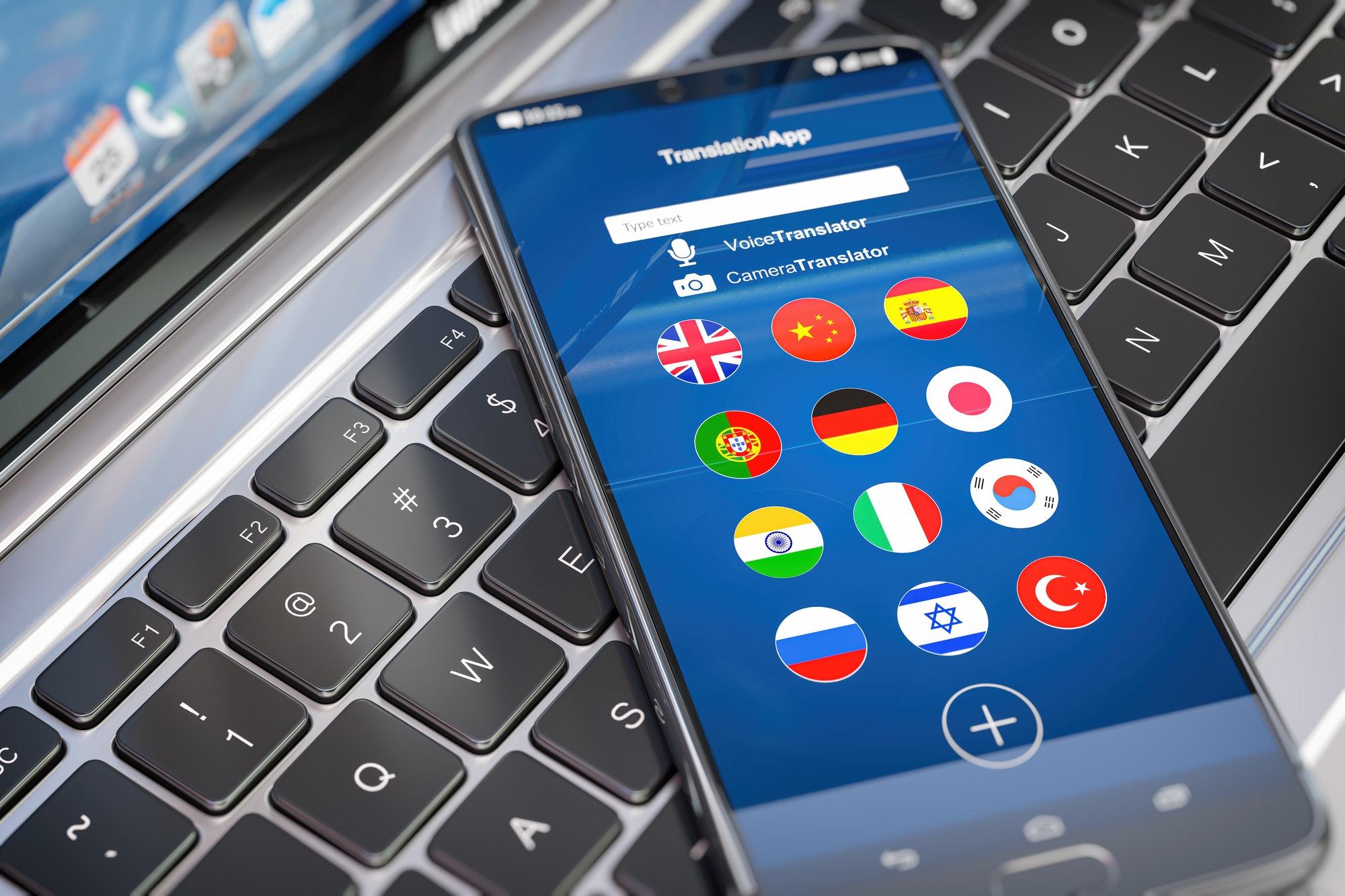Translation Technology: Is It A Match for Native Speakers?
There’s nothing like a native speaker to help translate a text. But what if there were advanced AI technology that could help bring translated books into the world more quickly and with less of a dent to the author’s budget? Would you be interested in that option? Honestly, who wouldn’t be?
The question: Is translation software available to authors that rivals native speaker translations?
What is DeepL?
According to its website, www.deepl.com, DeepL is “the world’s most accurate and nuanced machine translation.” Simply put, DeepL is a very user-friendly drop-and-click translation program. Once you’ve poked around on the main page, you might find a few user interface similarities between DeepL and Google Translate.
Exhibit A:
However, where DeepL really shines is with its available options and customizations. As an example, if you select alternate wording, the surrounding text adjusts automatically. You can also translate snippets or entire documents of various file types, choose a formal or informal translation tone, create glossaries to customize how texts are translated, and use the built-in dictionary to better understand nuanced definitions.
The best part? There’s a free version!
Are you sure it’s free?
Yes, there is a free version, but DeepL has to keep the lights on, and they manage that task by offering various plans with additional features.
While the free version does have quite a bit of functionality, including limited characters in files up to five megabytes and one glossary limited to ten entries, certain features are only available with the upgraded plans. The starter level at $6.99 includes five files per month up to ten megabytes, formal and informal tone, one glossary with five thousand entries, and up to two users for teams. At the advanced ($22.99) and ultimate ($45.99) levels, you get even more glossary, user, and file capabilities.
The option for multiple file translations per month might come in very handy when working with a backlist.
How does it actually work?
As a bit of a test, we enlisted the help of a USA Today bestselling romance author Lauren Smith. The goal is to see if DeepL can interpret period-specific language and get direct feedback from someone experienced with translations. First, let’s plug in a short snippet from Lauren’s regency romance book, Seducing an Heiress on a Train: A Victorian Christmas Romance.
When we flip the translation to see how it translates back, the text is quite close, with the context and intent of the phrasing mostly consistent, minus a bit of a change in the first sentence. To the untrained eye, the translation seems OK.
So it works on some level, but how does it compare to native translations?
Our DeepL translation of the passage used above reads as follows:
Rayne Egerton versuchte, die aufsteigende Nervosität zu unterdrücken, die in ihrem Bauch flatterte, als ihr Vater ihr aus der Kutsche half. Ihr Vater, Douglas Egerton, strahlte sie voller Stolz an. Sie versuchte, zurückzulächeln.
Fortunately for us, the author has already invested in a translator on this manuscript. Per the native German speaker, the translation of that same paragraph would be:
Rayne Egerton versuchte, die aufsteigenden Nerven zu unterdrücken, die in ihrem Bauch flatterten, als ihr Vater ihr aus der Kutsche half. Ihr Vater Douglas Egerton strahlte sie voller Stolz an. Sie versuchte, zurückzulächeln."
The two translations do contain one discrepancy as highlighted. On the surface, this seems to be a very good translation, but what happens when we compare dialogue, which is often much more nuanced and may contain even more period-specific phrasing?
Original passage of dialogue in English:
“It’s my first English ball, Father. What if I don’t know the right dances or say the wrong thing to one of the peers? The titles still confuse me.” She had spent the last month reading a copy of Debrett’s Peerage as she tried to understand the complicated system. Rayne still felt completely uncomfortable with all of the modes of address. At home, a woman was either a Miss or a Mrs., and a man was simply a Mr. There were no earls, dukes, viscount, barons, or knights. Here it was all Lord this or Right Honorable that. And trying to keep their order of importance straight… It was all too much.
DeepL translation into German:
"Es ist mein erster englischer Ball, Vater. Was ist, wenn ich nicht die richtigen Tänze kenne oder das Falsche zu einem der Kollegen sage? Die Titel verwirren mich immer noch." Sie hatte den letzten Monat damit verbracht, eine Ausgabe von Debrett's Peerage zu lesen, um das komplizierte System zu verstehen. Rayne fühlte sich immer noch völlig unwohl bei all den Anredeformen. Zu Hause war eine Frau entweder eine Miss oder eine Mrs., und ein Mann war einfach ein Mr. Es gab keine Grafen, Herzöge, Vicomte, Barone oder Ritter. Hier hieß es nur Lord dies oder Right Honourable das. Und der Versuch, die Rangordnung einzuhalten... Das war zu viel.
Native German speaker’s translation:
»Das ist mein erster englischer Ball, Vater. Was ist, wenn ich die richtigen Tänze nicht kenne oder einem der Herren das Falsche sage? Die Adelstitel verwirren mich immer noch.« Sie hatte den letzten Monat damit verbracht, eine Ausgabe von Debretts Peerage zu lesen, während sie versuchte, das komplizierte System zu verstehen. Rayne fühlte sich bei all den Anreden immer noch völlig unwohl. Zu Hause war eine Frau entweder eine Miss oder eine Mrs., und ein Mann war einfach ein Mister. Es gab keine Grafen, Herzöge, Viscounts, Barone oder Ritter. Hier war alles Lord dies oder Der Ehrwürdige das. Und zu versuchen, sich die Reihenfolge ihrer Wichtigkeit zu merken … Es war alles zu viel.
In examining larger blocks of text with complex structures, such as passages of dialogue, there are quite a few more discrepancies, and that is without considering punctuation differences and loss of formatting. But does this mean that DeepL isn’t as good as the native speaker? Maybe.
To better understand how well the AI translation compares, we went straight to the source: the same German translator who worked on the above manuscript, Corinna Vexborg at The Novel Translator, www.thenoveltranslator.com.
“Generally speaking, translation softwares are a great tool to aid a translation,” Vexborg writes, “in that it means the translator spends a lot less time looking up less familiar words. But an author should never, ever attempt to translate a novel by solely relying on software. It is a software, not a human being. It has a brain, but no heart.” She goes on to say that when the software is paired with a translator to avoid instances where the translations are “a bit dodgy” or outright wrong, it can be helpful to both parties.
Vexborg also provided a detailed explanation of the differences between the DeepL translation and her word choices, which showed that DeepL’s AI struggled to understand language conventions, often with titles, and popular conversational or fluent usage. Word selections that would have helped the reader clarify the author’s intent were partially lost in favor of literal translations that would read very formal or awkward.
From an author’s perspective, “DeepL seems to have a very decent translation from language to language when the wording you are using is straightforward,” Smith writes. Smith concluded that she would likely use the software for very short sections of text or more formal pieces, like an author bio, but would likely avoid using the program for anything longer, especially texts with pop culture references, historical language, or slang.
The verdict: The comparison shows us that DeepL is a great tool to have in your arsenal, but the skill and accuracy of a native translator has yet to be equaled.
Fret not! We don’t have to worry about the machines taking over just yet. For now, we’ll let the AI help with the small stuff and leave world domination for another day.


